How to Grow Acorn Squash in Containers: A Comprehensive Guide

Are you a gardening enthusiast with limited space? Do you dream of growing your own fresh and delicious acorn squash, but don’t have a large garden? Look no further! In this comprehensive guide, we will show you how to successfully grow acorn squash in containers, allowing you to enjoy the bountiful harvest right from your own balcony or patio.
Why choose acorn squash?
Acorn squash is a versatile and nutritious vegetable that is packed with vitamins and minerals. Its sweet and nutty flavor makes it a favorite for many culinary dishes. Additionally, acorn squash is relatively easy to grow and thrives in container gardens, making it an ideal choice for urban gardeners or those with limited space.
Getting started: choosing the right container
When it comes to growing acorn squash in containers, choosing the right container is crucial for the success of your plants. Opt for a container that is at least 12 inches deep and has a capacity of 5 gallons or more. This will provide enough space for the roots to grow and allow for proper drainage. Additionally, make sure the container has drainage holes to prevent waterlogging, which can lead to root rot.
Soil and sunlight requirements
Acorn squash thrives in well-draining soil that is rich in organic matter. Use a high-quality potting mix that is specifically formulated for container gardening. Place your container in a location that receives at least 6-8 hours of direct sunlight per day. If you don’t have access to full sun, consider using grow lights to supplement the natural sunlight.
Planting and care
Start by planting your acorn squash seeds directly into the container, following the instructions on the seed packet. Water the seeds thoroughly and keep the soil consistently moist but not waterlogged. As the plants grow, provide support by using stakes or trellises to prevent the vines from sprawling on the ground. Regularly check for pests and diseases, and take appropriate measures to protect your plants.
Harvesting and enjoying your acorn squash
Once your acorn squash plants start producing fruits, it’s time to harvest and enjoy the fruits of your labor. Harvest the squash when they reach full size and have a deep, rich color. Use a sharp knife or pruning shears to cut the squash from the vine, leaving a short stem attached. Store the harvested squash in a cool, dry place for up to several months, or prepare them immediately for a delicious meal.
By following these comprehensive guidelines, you can successfully grow acorn squash in containers and enjoy a bountiful harvest of this delicious and nutritious vegetable. So, roll up your sleeves, grab your containers, and get ready to embark on an exciting gardening adventure!
Choosing the Right Container
When it comes to growing acorn squash in containers, choosing the right container is essential for the success of your plants. Here are some factors to consider when selecting a container:
| Factor | Consideration |
|---|---|
| Size | Acorn squash plants require a container that is at least 12 inches deep and 12 inches wide. This will provide enough room for the roots to grow and for the plant to spread out. |
| Drainage | Make sure the container has drainage holes at the bottom to allow excess water to escape. Without proper drainage, the roots can become waterlogged and lead to root rot. |
| Material | Choose a container made of a durable material, such as plastic or ceramic, that can withstand outdoor conditions. Avoid containers made of metal, as they can heat up in the sun and damage the roots. |
| Weight | Consider the weight of the container, especially if you plan to move it around. A lightweight container will be easier to handle and transport. |
| Number of Plants | Determine how many acorn squash plants you plan to grow in each container. Make sure the container is large enough to accommodate the number of plants and allow for proper spacing. |
By considering these factors, you can choose the right container that will provide the optimal growing conditions for your acorn squash plants. Remember to check the container regularly for any signs of damage or wear, and make any necessary adjustments to ensure the health and growth of your plants.
Preparing the Container

Before planting acorn squash in containers, it’s important to prepare the container properly to ensure optimal growth and productivity. Follow these steps to prepare the container:
- Choose the right container: Select a container that is at least 12 inches deep and has a capacity of at least 5 gallons. This will provide enough space for the acorn squash roots to grow.
- Ensure proper drainage: Make sure the container has drainage holes at the bottom to prevent water from pooling and causing root rot. If the container doesn’t have drainage holes, drill several holes in the bottom.
- Use high-quality potting soil: Fill the container with a well-draining potting mix that is rich in organic matter. Avoid using garden soil, as it may contain pests, diseases, or weed seeds.
- Add compost or organic fertilizer: Mix in some compost or organic fertilizer into the potting soil to provide the acorn squash with essential nutrients. This will help promote healthy growth and fruit production.
- Place the container in a sunny location: Acorn squash plants require at least 6-8 hours of direct sunlight per day. Choose a spot that receives ample sunlight and is protected from strong winds.
- Water the soil: Before planting the acorn squash seeds or seedlings, thoroughly water the soil in the container. This will ensure that the soil is evenly moist and ready for planting.
By following these steps, you’ll create an ideal environment for growing acorn squash in containers. Remember to regularly water and fertilize the plants, and provide support for the vines as they grow. With proper care, you’ll be able to enjoy a bountiful harvest of delicious acorn squash!
Selecting the Right Soil
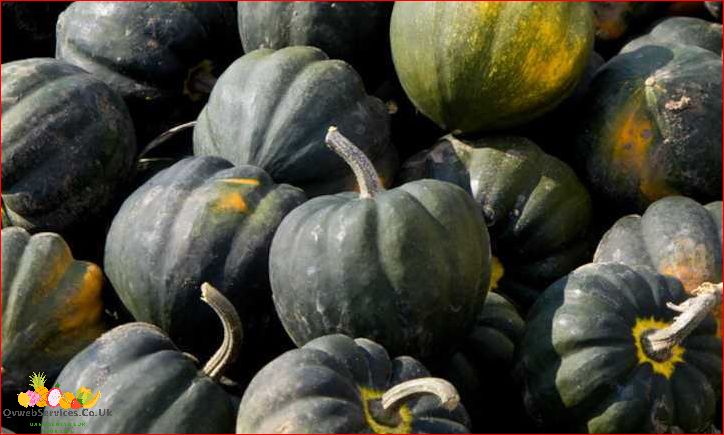
When growing acorn squash in containers, selecting the right soil is crucial for the success of your plants. Acorn squash prefers well-draining soil that is rich in organic matter. A good soil mix for container gardening can be made by combining equal parts of compost, peat moss, and perlite or vermiculite.
Compost is a great addition to the soil mix as it provides essential nutrients to the plants and improves soil structure. Peat moss helps retain moisture in the soil and improves drainage, while perlite or vermiculite aids in aeration and prevents compaction.
It’s important to avoid using garden soil or topsoil alone in containers, as they tend to become compacted and may not provide adequate drainage for the plants. Additionally, these types of soil may contain weed seeds or pathogens that can harm your plants.
Before planting your acorn squash seeds or seedlings, make sure to moisten the soil mix thoroughly. This will help ensure that the plants have access to water from the start and will prevent the soil from drying out too quickly.
Remember to regularly check the moisture level of the soil and water your acorn squash plants as needed. Container-grown plants may require more frequent watering compared to those grown in the ground, as the soil in containers tends to dry out faster.
By selecting the right soil mix and providing proper moisture, you can create an ideal growing environment for your acorn squash plants in containers.
Sowing Acorn Squash Seeds
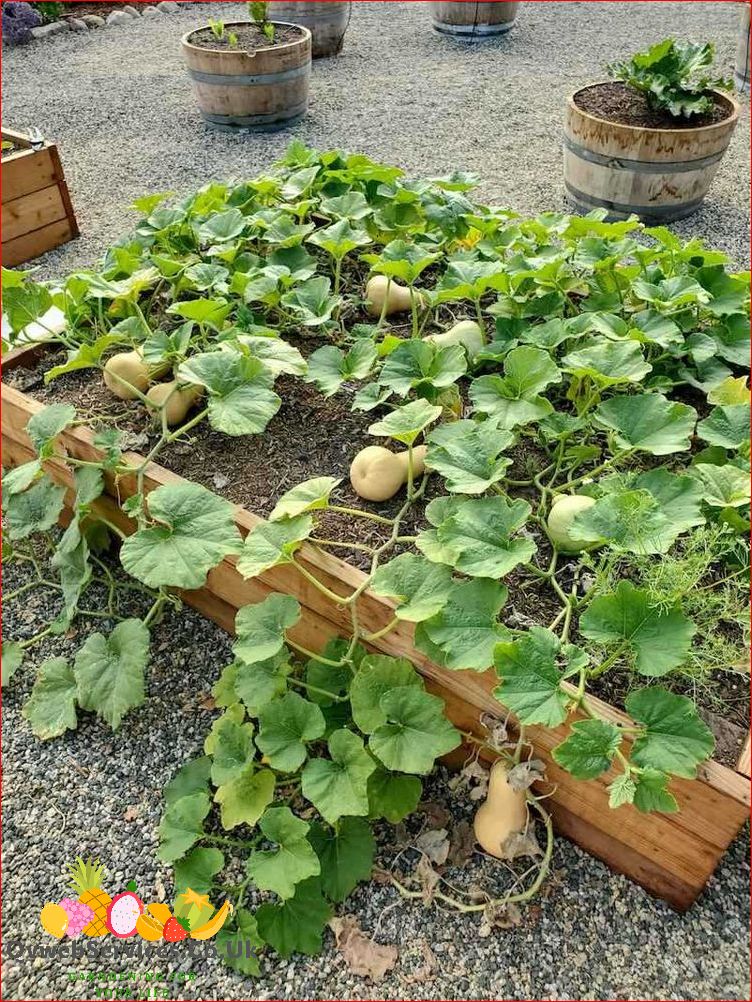
When it comes to growing acorn squash in containers, the first step is to sow the seeds. Here are some tips to help you successfully sow acorn squash seeds:
1. Choose the Right Container: Select a container that is at least 12 inches deep and has drainage holes at the bottom. This will ensure that the soil doesn’t become waterlogged and the roots have enough space to grow.
2. Prepare the Soil: Use a well-draining potting mix that is rich in organic matter. Acorn squash prefers soil that is slightly acidic, with a pH level between 6.0 and 6.8. Mix in some compost or aged manure to improve the soil’s fertility.
3. Sow the Seeds: Plant the seeds about 1 inch deep in the soil, with a spacing of 2-3 feet between each seed. You can sow multiple seeds in the same container, but make sure to thin them out later to avoid overcrowding.
4. Provide Adequate Water: After sowing the seeds, water the container thoroughly to ensure that the soil is evenly moist. Avoid overwatering, as this can lead to root rot. Water the plants regularly, keeping the soil consistently moist but not soggy.
5. Provide Proper Lighting: Acorn squash plants require at least 6-8 hours of direct sunlight per day. Place the container in a sunny location, such as a south-facing window or balcony, to ensure that the plants receive adequate light.
6. Maintain the Temperature: Acorn squash plants thrive in warm temperatures, between 70-85°F (21-29°C). Make sure to keep the container in a location where the temperature remains within this range. Avoid exposing the plants to frost or extreme heat.
7. Thin Out the Seedlings: Once the seedlings have grown to a few inches tall, thin them out by removing the weaker ones. This will allow the stronger seedlings to have more space and resources to grow into healthy plants.
8. Provide Support: As the acorn squash plants grow, they will develop long vines that can benefit from some support. You can use trellises or stakes to keep the vines upright and prevent them from sprawling all over the container.
9. Fertilize Regularly: Feed the acorn squash plants with a balanced organic fertilizer every 2-3 weeks to provide them with the necessary nutrients. Follow the instructions on the fertilizer package for the correct dosage.
10. Watch for Pests and Diseases: Keep an eye out for common pests like aphids, squash bugs, and powdery mildew. Regularly inspect the plants and take appropriate measures, such as using organic insecticides or removing infected leaves, to prevent the spread of pests and diseases.
By following these steps, you can successfully sow acorn squash seeds in containers and enjoy a bountiful harvest of delicious and nutritious squash.
Providing Adequate Watering
Watering is a crucial aspect of growing acorn squash in containers. These plants require consistent moisture to thrive and produce healthy fruits. Here are some tips for providing adequate watering:
1. Establish a watering schedule
Set up a regular watering schedule for your acorn squash plants. Aim to water them deeply once or twice a week, depending on the weather conditions. Adjust the frequency as needed to ensure the soil remains consistently moist but not waterlogged.
2. Monitor soil moisture
Regularly check the moisture level of the soil in your containers. Stick your finger about an inch deep into the soil to see if it feels dry. If it does, it’s time to water your plants. Avoid letting the soil completely dry out between waterings, as this can stress the plants and affect fruit production.
3. Water at the base of the plants
When watering your acorn squash plants, aim to water at the base of the plants rather than overhead. This helps prevent the leaves from getting wet, which can lead to fungal diseases. Use a watering can or a drip irrigation system to deliver water directly to the soil.
4. Mulch the soil
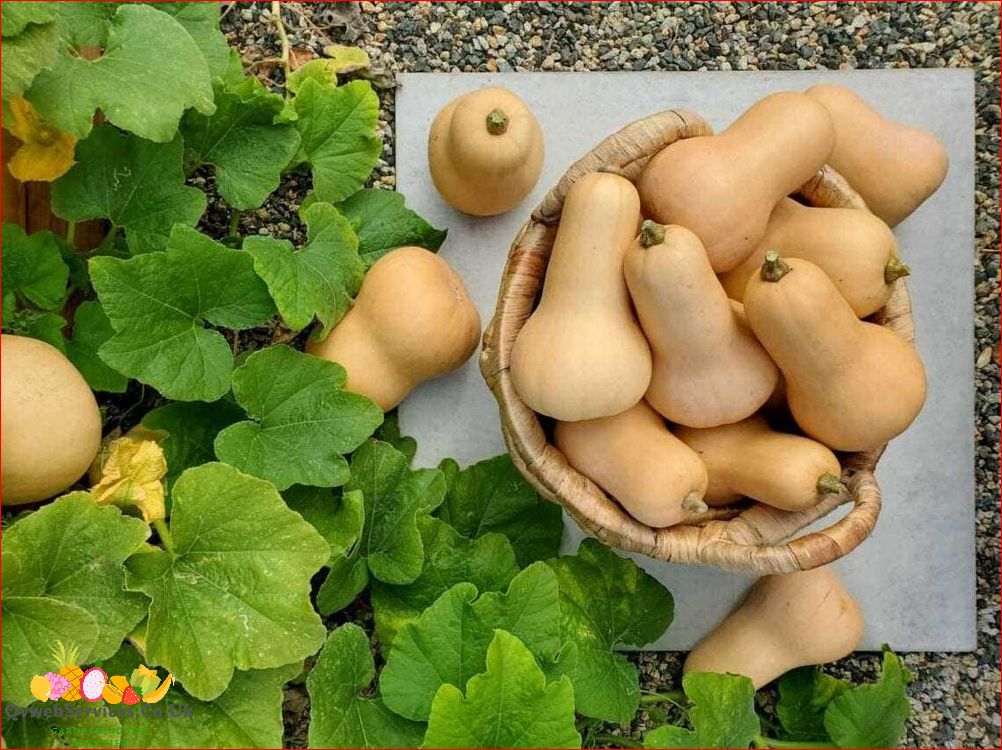
Applying a layer of organic mulch around the base of your acorn squash plants can help retain moisture in the soil. Mulch also helps suppress weed growth and regulate soil temperature. Use straw, wood chips, or compost as mulch, and replenish it as needed throughout the growing season.
5. Use a well-draining potting mix
Choosing a well-draining potting mix is essential for container-grown acorn squash plants. Avoid heavy soils that retain water for too long, as this can lead to root rot. Look for a mix specifically formulated for container gardening, or create your own by combining equal parts of compost, peat moss, and perlite or vermiculite.
By providing adequate watering, you can ensure that your acorn squash plants in containers receive the moisture they need to thrive and produce a bountiful harvest.
Ensuring Proper Sunlight
Acorn squash plants require a minimum of 6-8 hours of direct sunlight per day to thrive. When growing acorn squash in containers, it is essential to choose a location that receives ample sunlight. Place your containers in an area that gets the most sunlight throughout the day, such as a south-facing balcony or patio.
If your chosen location does not receive enough sunlight, you can consider using artificial grow lights to supplement the natural light. LED grow lights are a popular choice for indoor gardening as they provide the necessary light spectrum for plant growth. Position the grow lights above the containers, keeping them at a distance of about 12-18 inches from the plants.
Optimizing Sunlight Exposure
To maximize sunlight exposure for your acorn squash plants, you can take a few additional steps:
- Rotate the Containers: Rotate the containers every few days to ensure that all sides of the plants receive equal sunlight. This will prevent the plants from leaning towards the light source and promote even growth.
- Prune Surrounding Plants: If there are any tall plants or structures blocking sunlight, consider pruning or relocating them to allow more light to reach your acorn squash plants.
- Use Reflective Surfaces: Place reflective surfaces, such as mirrors or aluminum foil, around the containers to redirect sunlight onto the plants. This can help increase the overall light intensity and improve plant growth.
By ensuring proper sunlight exposure, you can provide your acorn squash plants with the necessary energy for photosynthesis and healthy growth. Remember to monitor the sunlight conditions regularly and make any necessary adjustments to optimize the growing environment.
Fertilizing the Acorn Squash Plants
Proper fertilization is essential for the healthy growth and development of acorn squash plants. By providing the right nutrients, you can ensure that your plants have the necessary resources to produce abundant and flavorful squash.
Before planting your acorn squash seeds or seedlings, it is important to prepare the soil by adding organic matter, such as compost or well-rotted manure. This will help improve the soil’s fertility and provide a good foundation for your plants.
Once your acorn squash plants are established, you can begin fertilizing them. A balanced fertilizer with equal amounts of nitrogen, phosphorus, and potassium (NPK) is ideal for acorn squash. Look for a fertilizer with an NPK ratio of around 10-10-10 or 14-14-14.
Apply the fertilizer according to the package instructions, taking care not to over-fertilize. Too much nitrogen can result in excessive foliage growth at the expense of fruit production. It is generally recommended to fertilize acorn squash plants every 4-6 weeks throughout the growing season.
In addition to the regular application of balanced fertilizer, you can also provide additional nutrients to your acorn squash plants through foliar feeding. This involves spraying a liquid fertilizer directly onto the leaves, allowing the plant to absorb the nutrients through its foliage.
When foliar feeding, choose a fertilizer that is specifically formulated for foliar application and dilute it according to the manufacturer’s instructions. Spray the foliage in the early morning or late afternoon, when the temperatures are cooler and the leaves can absorb the nutrients more effectively.
Remember to water your acorn squash plants thoroughly after fertilizing to help the nutrients reach the plant’s roots. Regular watering is also important for the overall health and productivity of your plants.
By providing the right nutrients through proper fertilization, you can ensure that your acorn squash plants thrive and produce an abundant harvest of delicious squash.
Managing Pests and Diseases
When growing acorn squash in containers, it is important to be aware of common pests and diseases that can affect your plants. By taking preventive measures and implementing proper management techniques, you can ensure the health and productivity of your acorn squash.
Pests:
- Aphids: These small insects can suck the sap from your acorn squash plants, causing stunted growth and yellowing leaves. To control aphids, you can spray a mixture of water and dish soap on the affected plants or introduce natural predators like ladybugs.
- Squash bugs: These pests can cause significant damage to your acorn squash plants by feeding on the leaves and stems. Regularly inspect your plants for squash bugs and remove them by hand. You can also use insecticidal soap or neem oil to control their population.
- Cucumber beetles: These beetles can transmit bacterial wilt to your acorn squash plants, leading to wilting and death. To manage cucumber beetles, you can use row covers to protect your plants or apply an insecticide labeled for cucumber beetles.
Diseases:
- Powdery mildew: This fungal disease can affect the leaves of your acorn squash plants, causing a white powdery coating. To prevent powdery mildew, ensure good air circulation around your plants and avoid overhead watering. If powdery mildew appears, you can apply a fungicide labeled for this disease.
- Root rot: Overwatering and poor drainage can lead to root rot in acorn squash plants. To prevent root rot, make sure your containers have drainage holes and water your plants only when the top inch of soil is dry. If root rot occurs, remove the affected plants and improve the drainage of your containers.
- Anthracnose: This fungal disease can cause dark, sunken lesions on the fruits of your acorn squash plants. To prevent anthracnose, avoid overhead watering and remove any infected fruits or plant debris. Applying a fungicide labeled for anthracnose can also help control the disease.
By being vigilant and taking appropriate actions, you can effectively manage pests and diseases in your acorn squash container garden. Regularly monitor your plants, provide proper care, and promptly address any issues that arise to ensure a successful harvest of delicious acorn squash.
Harvesting Acorn Squash
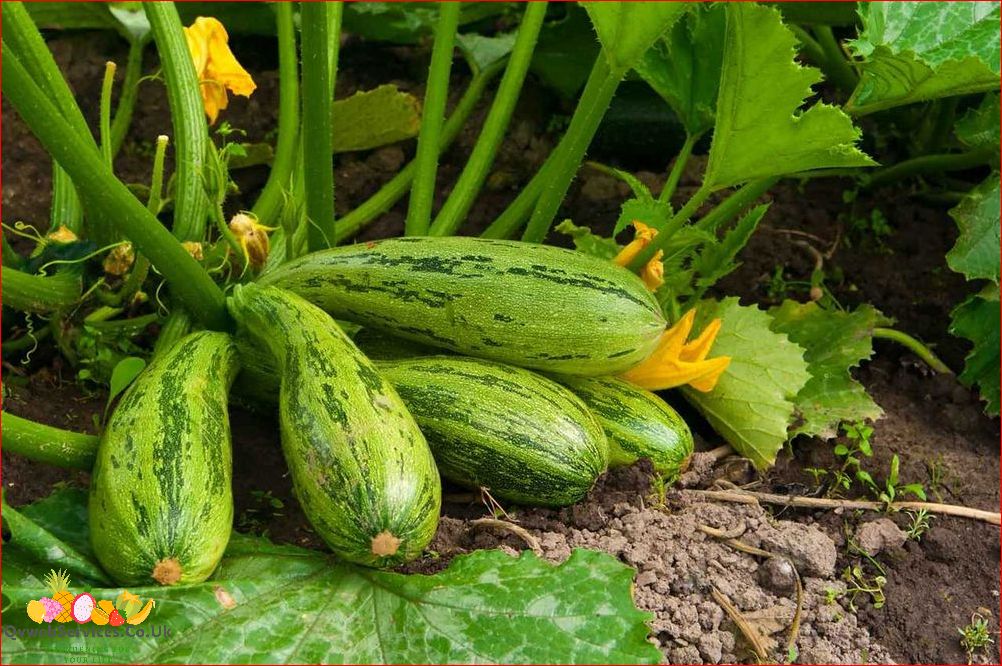
Harvesting acorn squash is an exciting and rewarding part of growing your own vegetables. When the squash is fully mature, it will have a deep, rich color and a hard rind. Here are some tips to help you know when and how to harvest your acorn squash.
Timing
Acorn squash typically takes about 80-100 days to mature from the time of planting. You can start harvesting acorn squash when the fruits have reached their full size and the rind has hardened. It’s important not to harvest them too early, as they won’t have developed their full flavor and sweetness.
Visual Cues
When the acorn squash is ready to be harvested, the skin will have a deep, dark green color. It should also have a hard rind that cannot be easily punctured with your fingernail. Additionally, the stem that connects the squash to the vine should be dry and brown.
Another visual cue is the presence of a full, round shape. Acorn squash should have a plump and rounded appearance, indicating that they are fully developed.
Harvesting Technique
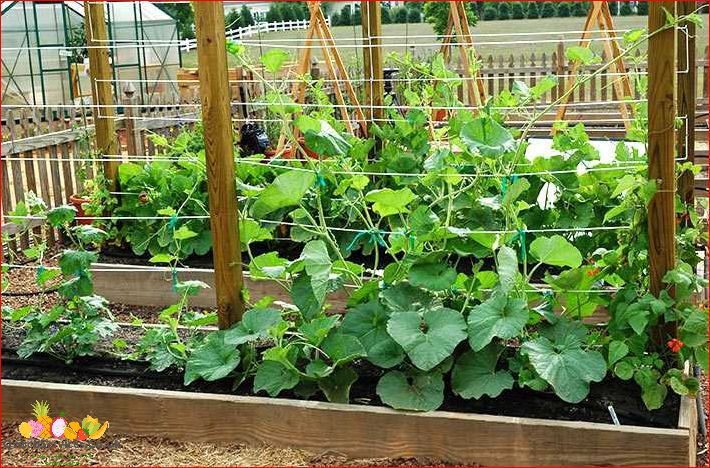
To harvest acorn squash, use a sharp knife or pruners to cut the stem about 1 inch above the fruit. Be careful not to damage the squash or the vine while doing this. Avoid pulling or twisting the squash off the vine, as this can cause damage and reduce the storage life of the squash.
After harvesting, it’s important to handle the squash with care to prevent any bruising or damage. Place the harvested squash in a cool, dry location to cure for a few weeks. This will help the squash develop its full flavor and sweetness.
With proper harvesting and handling techniques, you can enjoy the delicious taste of homegrown acorn squash throughout the winter months.
Video:How to Grow Acorn Squash in Containers: A Comprehensive Guide
Acorn Squash : Super Quick Tips
My 5 Secret Tips for a Bigger Better Squash Harvest!
As Stephanie C. Phillips, I am the voice and green thumb behind QvWebServices.co.uk. My passion for gardening and sharing my knowledge with others has led me to create a space where fellow gardening enthusiasts can find practical advice and inspiration.
From the sun-soaked fields of Texas to the cozy balconies of city dwellers, I strive to guide you through the nuances of growing your own food and beautifying your surroundings with plants. My articles are a reflection of my dedication to the art of gardening, and I hope they encourage you to get your hands dirty and enjoy the rewards of nurturing life from the soil.
Join me on this verdant journey to cultivate not just gardens, but a sense of community and connection to the earth.

